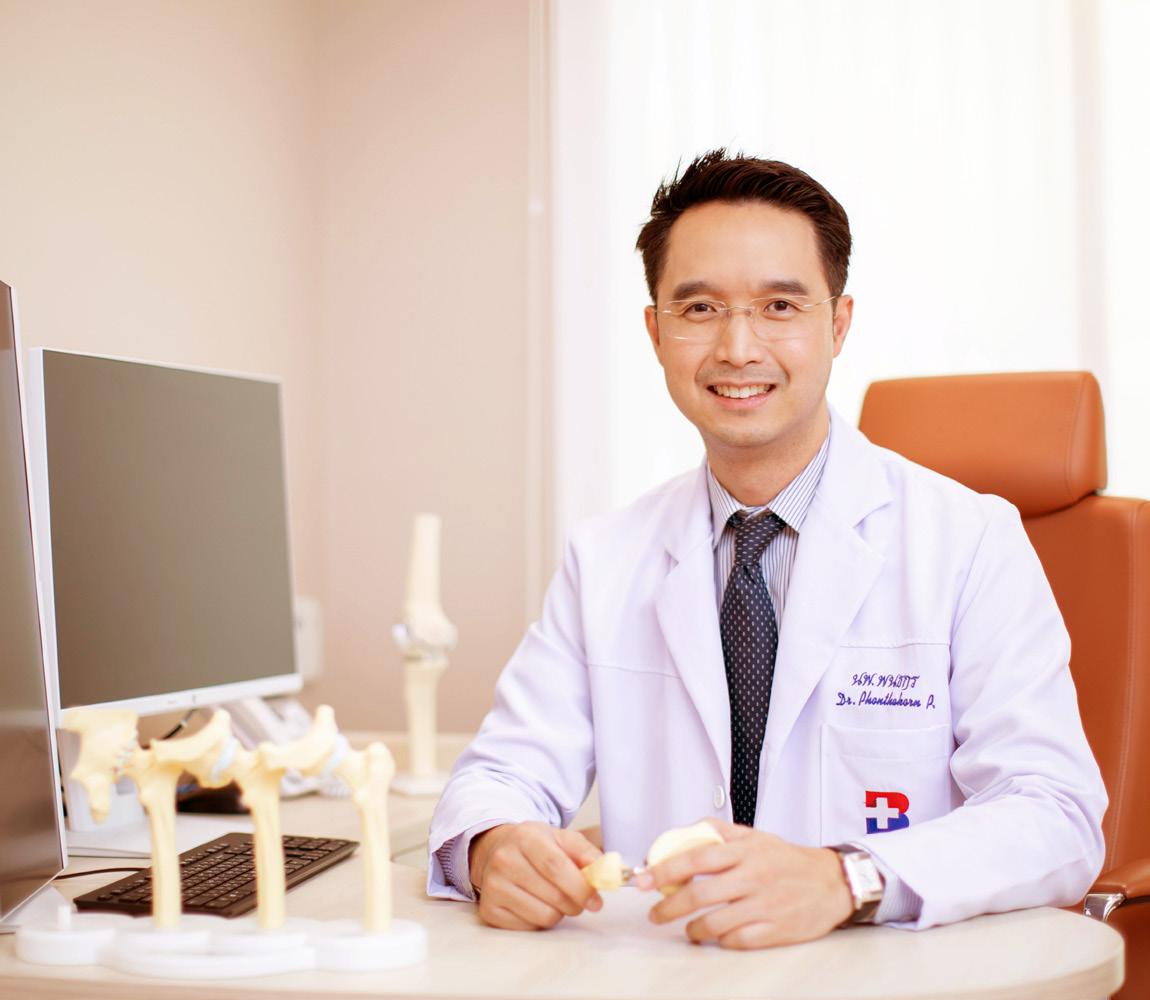
3 minute read
REBOOT Your Bounce
Enjoy a worry free life with Bangkok International Hospital’s comprehensive hip and knee treatments that provide pain relief
According to Dr. Phonthakorn Panichkul, a Joint Reconstruction and Arthroplasty Surgeon
Advertisement
Knee surgery can be frightening as patients often worry about curability and the inability to walk afterwards. To eliminate this anxiety, Hip and Knee Center at Bangkok International Hospital offers total knee replacement surgery that combines cutting-edge pain intervention techniques, such as adductor canal block and radiofrequency nerve ablation to minimize pain.
Knee and Hip Replacement
If you experience severe knee pain when moving, have knee deformities, orchronic knee inflammation, you might have osteoarthritis of the knee. Knee osteoarthritis can greatly impact one’s life, and although there is no cure, lifestyle changes can slow disease progression. However, if the damage is severe, total knee replacement surgery is one of the most effective ways of restoring the knee function, allowing for patients to enjoy life as normal. Other cutting-edge processes employed include the Nobel Prize winning Biplane Imaging (EOS) system that provides full-body 3D skeleton imaging. Taking less than 20 seconds, it enables orthopedic surgeons to make an accurate diagnosis prior to surgery. Moreover, a Digital Template Computer Program allows surgeons to customize the size and determine the position of the prosthesis, subsequently reducing the possibility of traumatic damage to surrounding areas and prolonging the lifespan of the implants.
Thanks to an emphasis on fast rehabilitation, patients often start walking and restoring full muscle function within 24 hours of surgery. Over 90% of patients who receive total knee replacement surgery experience minimal pain and are able to return to daily activities within 1.5 to 3 months. Similarly, hip osteoarthritis often appears in people older than 40 with contributing factors including genetic abnormalities, autoimmune and SLE diseases, rheumatoid arthritis, and also the long-term steroid use. In its late stages, patients can experience hip pain that may radiate to the knee, disrupted sleep and limited mobility, resulting in a poor quality of life.
In the past, traditional hip replacement surgery involved making a large incision (6 to 8 inches) on the side of the hip (lateral) or the back of the hip (posterior). Both require muscle and tendon detachment, which causes pain and prolongs the full recovery by months or years. If muscles fail to heal properly after surgery, the risk of dislocation and other unwanted postoperative outcomes also increases. Nowadays, advanced technology in orthopedic surgery allows for less invasive procedures with improved surgical results. For example, the Direct Anterior Approach (DAA) Cosmetic Incision Hip Replacement Surgery has become increasingly popular as it is a minimally invasive surgery involving a smaller bikini incision (3 to 4 inches) hidden at the groin.
The incision allows the joint to be on the natural tissue planes without detaching any tendons and muscles, resulting in less pain, less blood loss, lower post-operative complications, faster recovery, improved mobility and additional cosmetic benefits. And patients often only spend 2 to 4 days in the hospital before returning home. Prior to the operation, digital template surgical planning is conducted to select a suitable artificial joint for each patient from a wide range, including cobalt chromium or ceramic, while new artificial stems are used to ensure that the prosthesis will not sink after surgery. This provides better accuracy in examining the length of a patient’s legs and location of the joints. We have successfully done more than 500 DAA cases at our hospital.
As a pioneer of DAA hip replacement in the Asia-Pacific region, the experienced team of surgeons at Hip and Knee Center, Bangkok International Hospital uses the latest hip prosthesis, Actis® stem, for easeof-insertion and improved implant stability so patients restore mobility more quickly. In addition, JointPoint™ is a new non-invasive hip navigation system that provides surgeons with significant data on cup position, leg length, and stem position, thus minimizing complications.










